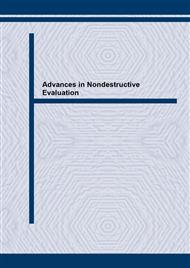[1]
F. M. Guerot and N. J. Fisher, Steam Generator Fretting-Wear Damage: A Summary of Recent Findings, Journal of Pressure Vessel Technology, Vol. 121 (1999), pp.304-310.
DOI: 10.1115/1.2883707
Google Scholar
[2]
H. S. Chung, K. T. Kim, L. H. Jong, N. M. Woo and H. D. Kim, A Study on the Integrity Assessment of Defected Steam Generator Tube, KEPRI TM. 96NJ14 (2000).
Google Scholar
[3]
J. M. Alzheimer, R. A. Clark, C. J. Morris and M. Vagins, 1979, Steam Generator Tube Integrity Program Phase I Report, NUREG/CR-0718 (1979).
DOI: 10.2172/5920767
Google Scholar
[4]
EPRI NP-6865-L, Steam Generator Tube Integrity Volume 1: Burst Test Results and Validation of Rupture Criteria (Framatome data), (1991).
Google Scholar
[5]
D. P. Updike and A. Kalnins, Tensile Plastic Instability of Axisymmetric Pressure Vessels, Journal of Pressure Vessel Technology, Vol. 120 (1998), pp.6-11.
DOI: 10.1115/1.2841888
Google Scholar
[6]
M. J. Hillier, Tensile Plastic Instability of Thin Tubes-I, International Journal of Mechanics and Science, Vol. 7 (1965), pp.531-538.
Google Scholar
[7]
E. Riks, An Incremental Approach to The Solution of Snapping and Buckling Problem, International Journal of Solids Structures, Vol. 15 (1979), pp.529-551.
DOI: 10.1016/0020-7683(79)90081-7
Google Scholar
[8]
M. A. Crisfield, Snap-Through and Snap-Back Response in Concrete Structures and The Dangers of Under-Integration, International Journal for Numerical Methods in Engineering, Vol. 22 (1986), pp.751-767.
DOI: 10.1002/nme.1620220314
Google Scholar
[9]
Abaqus/Standard User's Manual Vol. 1, V. 6. 2, Hibbitt, Karlsson and Sorensen Inc. (2001).
Google Scholar


